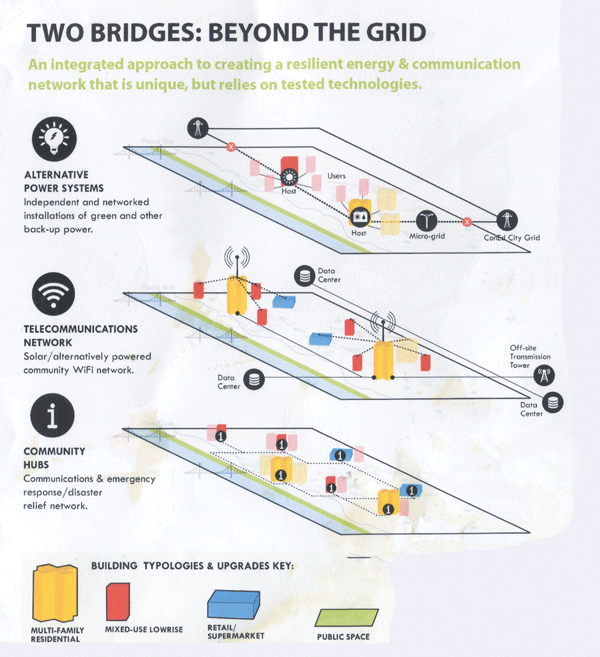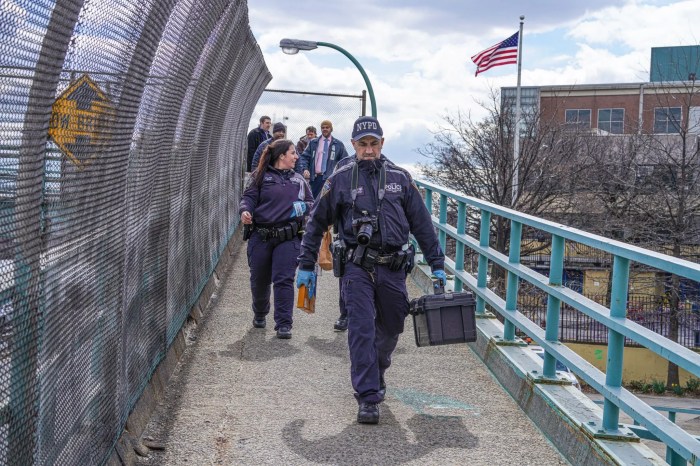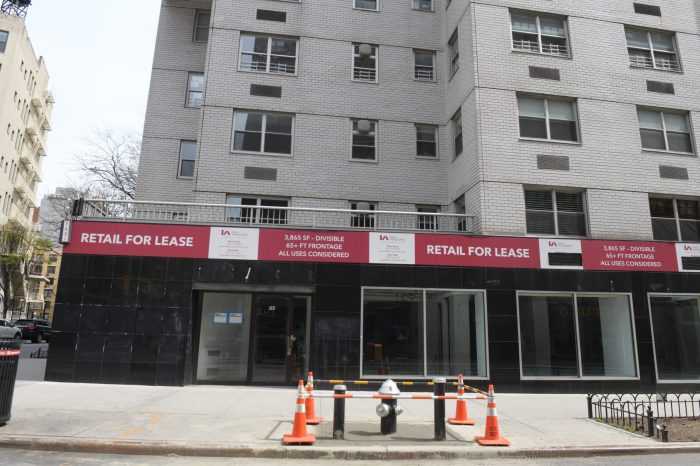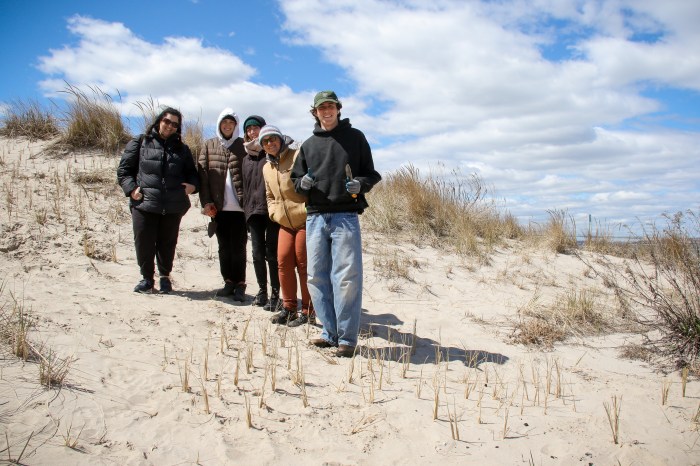BY MICHAEL OSSORGUINE | The Lower East Side was slammed in 2012, when Hurricane Sandy’s storm surge knocked out power and communication lines throughout the neighborhood. Now, a new project — Two Bridges Beyond the Grid — is aiming to mitigate the impact of possible future outages by creating what is known as a local microgrid.
This microgrid, billed as the first of its kind, would be an “urban electrical cooperative.” It would be both an electrical-power generation and distribution facility.
The current design includes a lithium-ion battery plant with an 8 megawatt per hour capacity, and a generation facility with a 2.4 megawatt per hour capacity. Running on renewable energy — solar and natural gas — the microgrid would work with Con Edison to consistently meet local demand, as well as shift into “islanded mode” in the event of an outage on the main Con Ed grid.
“We have what amounts to an uninterruptible power supply on a number of buildings,” said Paul Garrin, an executive board member of L.E.S. Ready. “Our microgrid provides 100 percent of the power 100 percent of the time, with surplus.”
The project would accomplish a number of goals: It would replace aging electrical equipment, reduce the risk of another extended power outage, reduce carbon emissions and keep rates low for the grid’s users.

“We’re trying to connect so-called ‘critical facilities,’ ” Garrin said. “That is actually a requirement, but it’s a no-brainer. All our urban studies from Pratt and from the Department of City Planning, and all the city projects that were done over the years to classify this area, look at the flood zone and identify vulnerabilities, have found that critical-facilities definitions go beyond just hospitals and fire departments. It also includes practical things: supermarkets, pharmacies. When we have a loss of power, we lose all that.”
In Sandy’s wake, some elderly Lower East Siders living in high-rise buildings found themselves stuck in their apartments with no working elevator. Police communications went down. Grocery stores were closed due to power failure.
Bob Fink, a tenant leader at Village East Towers, supports the plan.
“I applaud the efforts of the Beyond the Grid team to help us seniors and the all the rest of us to have the basics of sustainable big-city life at hand when we are in need,” he said.
The 11 buildings currently slated for the microgrid are in the northeast corner of the East Village. They include Campos Plaza I and II, Village East Towers, a supermarket, the Village East Community School — which actually houses three public schools — and buildings of University Settlement and Nazareth Housing.
Although the main risk of disruption to the microgrid remains flooding, a 140-page feasibility study clarifies that the system would be as impervious to unforeseen catastrophes as possible. According to the study, “All proposed new power generation, electrical storage, and microgrid control assets will be placed above the historic flood line” — on building rooftops and other strategic, elevated locations.
Victor Papa, president of the nonprofit Two Bridges Neighborhood Council, said his organization would be willing to staff the microgrid, as well as be the energy co-op’s main administrative force.
“This was a community-born idea and it has to maintain that independence,” Papa said.
The microgrid’s design, by Lockheed Martin Energy, includes demand-side efficiency measures not seen in conventional microgrids, where “load-shedding” normally shuts off power in some apartments during power outages, and transmission losses reduce the efficiency of energy distribution. On the supply side, the grid would be able to sell power back to Con Ed during the frequent power surpluses, and buy energy from Con Ed when the storage battery plant undergoes a power deficit. In addition, the grid would buy natural gas from Con Ed, which would be a partner in the project.
The regulations that control the buying and selling of power between utilities are extensive, and the transactions would be done through New York Independent System Operator as the arbitrage. Due to these and other complexities, a team of pro bono legal experts, including from Morrison & Foerster L.L.P., has been brought aboard for this project.
To finance the microgrid, which Garrin said would cost $15 million to build, the project’s masterminds joined a competition hosted by the New York State Energy Research and Development Authority called NY Prize. The agency already helped finance the feasibility study, and has $8 million available to design many projects all over the state. The deadline for engineering and business model proposals is in October.
The project’s original investment might not be recovered for many years, so a certain amount of debt would be taken on. However, the coalition is looking to the Department of Housing and Urban Development, NYSERDA and the Mayor’s of Office of Recovery and Resiliency, as well as other sources, to help minimize the debt.
Although the project is still in its early stages, its leaders believe their model could be reproduced elsewhere, helping revolutionize the utility industry, by increasing efficiency through locally owned generation and distribution.

















